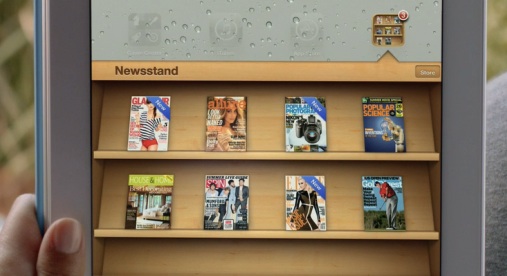Why brands should give consumers what they want, how and when they need it.
The above screen grab is from an appeal that Maura Johnston made yesterday evening on her Twitter account. Whichever site she was clicking on, her frustrating customer journey simply illustrates what some marketers and publishers have failed to grasp: relevancy is key to what people want in media.
Since its origins in publishing, content marketing has become one of the latest buzzwords in marketing. Google has recognised the importance of the relevancy of content in their latest search algorithm updates, as have so many other parts of the PR, marketing and retail industries.
Social media has had a great deal of influence in this growing tendency due to its capacity to allow family and friends to efficiently share the latest products, videos, news and entertainment with their network. The keyword here is efficiency, as time-hungry consumers dislike jumping hurdles when trying to get what they want.
Relevancy in content
There’s no secret to what used to make print publishing so successful, as at the core of all successful publishing products we will find relevancy of content. Publishers (should) know their target market inside out and so the content they produce ought to meet the reader’s expectations.
In the past, all this was relatively simple as it all came together in one channel, the printed magazine or newspaper. However, as we all know too well, the multitude of communication channels has piled much pressure on publishers and marketers to reach their audience by way of different platforms, each with their particular costs, challenges, etiquette and limitations.
Efficiency in the user journey
What marketers and publishers should not forget is that relevant content alone is not enough to satisfy consumers. A simple and straightforward route to access it is key to ensuring the content reaches them and serves its purpose. Otherwise, we are just wasting time and money in creating good content only to have customer journeys that frustrate the target audience, especially when venturing into the digital arena. You might have a very engaging video about your brand or product to excite consumers, but making them download an app to be able to see it is a one-way ticket to a negative customer experience.
This is all the more important in a world that is increasingly mobile. According to Google research, 72% of consumers want mobile-friendly sites (see study here), so if you’re looking to go digital with your content, make sure that it’s tailored to being accessed on mobile devices, especially smartphones and tablets. Although use of apps to showcase content is on the rise, more and more brands and their agencies are realising that a good mobile-friendly website is just as efficient in achieving campaign objectives, hereby sidetracking the many challenges of an app-centred content marketing plan.
This does not mean that every single website should load, by default, in mobile-friendly format when a consumer arrives at it. Some people with large screen smartphones and on tablets are more than happy to access websites in their “full fat” version. What’s important is give the consumer the preference and not dictate it. The consumer knows what (s)he wants. All you should do is be there to provide it how and when they want it.



